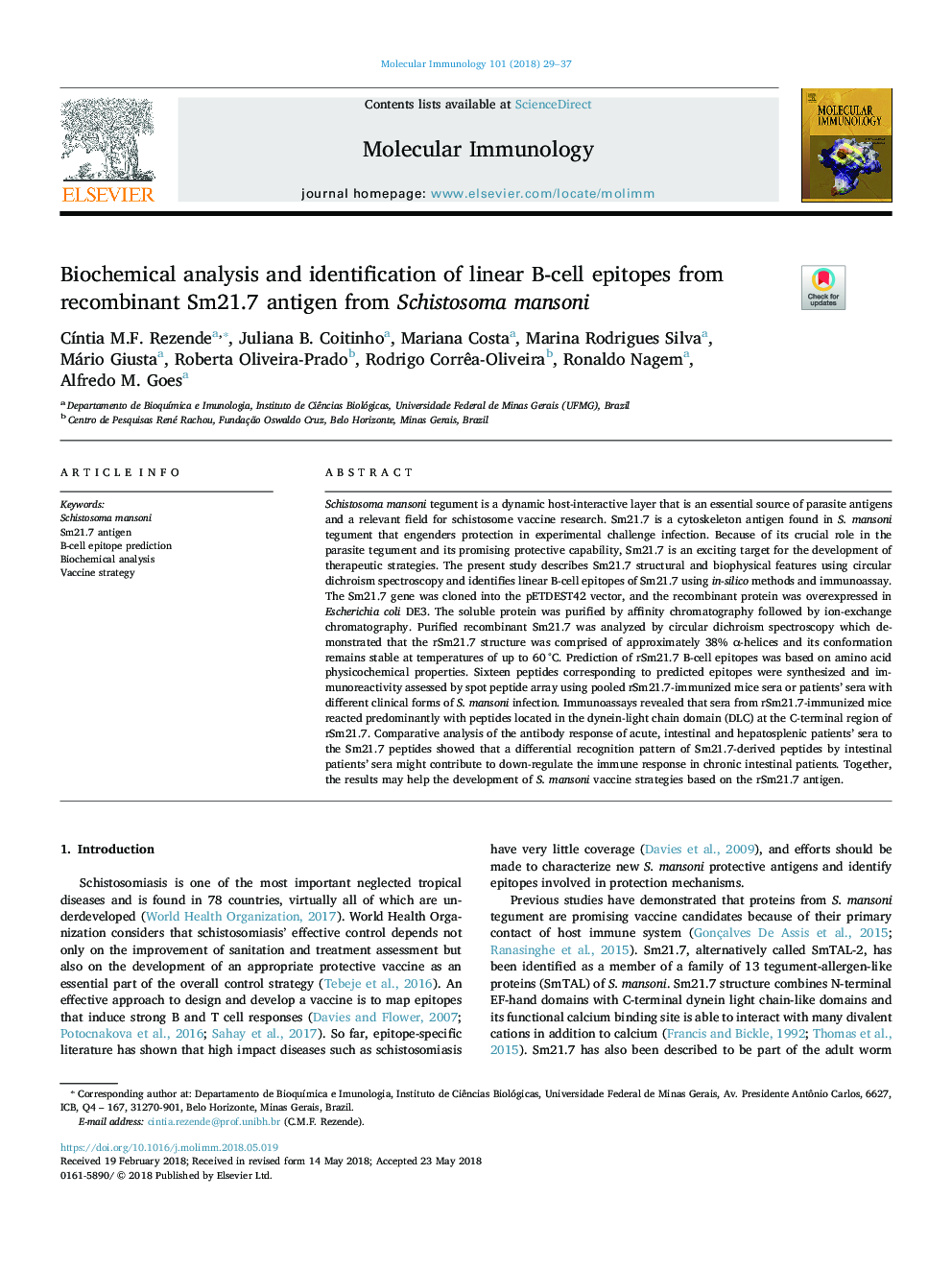| Article ID | Journal | Published Year | Pages | File Type |
|---|---|---|---|---|
| 8648391 | Molecular Immunology | 2018 | 9 Pages |
Abstract
Schistosoma mansoni tegument is a dynamic host-interactive layer that is an essential source of parasite antigens and a relevant field for schistosome vaccine research. Sm21.7 is a cytoskeleton antigen found in S. mansoni tegument that engenders protection in experimental challenge infection. Because of its crucial role in the parasite tegument and its promising protective capability, Sm21.7 is an exciting target for the development of therapeutic strategies. The present study describes Sm21.7 structural and biophysical features using circular dichroism spectroscopy and identifies linear B-cell epitopes of Sm21.7 using in-silico methods and immunoassay. The Sm21.7 gene was cloned into the pETDEST42 vector, and the recombinant protein was overexpressed in Escherichia coli DE3. The soluble protein was purified by affinity chromatography followed by ion-exchange chromatography. Purified recombinant Sm21.7 was analyzed by circular dichroism spectroscopy which demonstrated that the rSm21.7 structure was comprised of approximately 38% α-helices and its conformation remains stable at temperatures of up to 60â¯Â°C. Prediction of rSm21.7 B-cell epitopes was based on amino acid physicochemical properties. Sixteen peptides corresponding to predicted epitopes were synthesized and immunoreactivity assessed by spot peptide array using pooled rSm21.7-immunized mice sera or patients' sera with different clinical forms of S. mansoni infection. Immunoassays revealed that sera from rSm21.7-immunized mice reacted predominantly with peptides located in the dynein-light chain domain (DLC) at the C-terminal region of rSm21.7. Comparative analysis of the antibody response of acute, intestinal and hepatosplenic patients' sera to the Sm21.7 peptides showed that a differential recognition pattern of Sm21.7-derived peptides by intestinal patients' sera might contribute to down-regulate the immune response in chronic intestinal patients. Together, the results may help the development of S. mansoni vaccine strategies based on the rSm21.7 antigen.
Related Topics
Life Sciences
Biochemistry, Genetics and Molecular Biology
Molecular Biology
Authors
CÃntia M.F. Rezende, Juliana B. Coitinho, Mariana Costa, Marina Rodrigues Silva, Mário Giusta, Roberta Oliveira-Prado, Rodrigo Corrêa-Oliveira, Ronaldo Nagem, Alfredo M. Goes,
